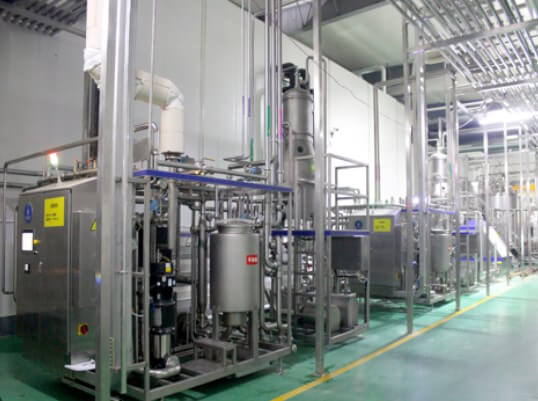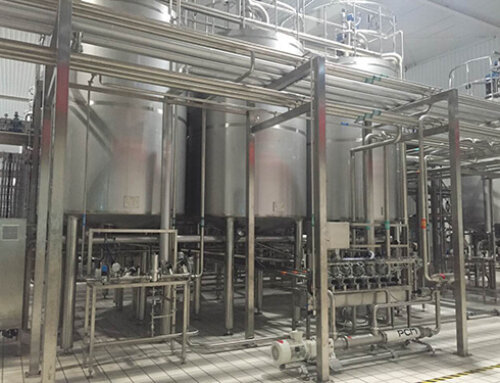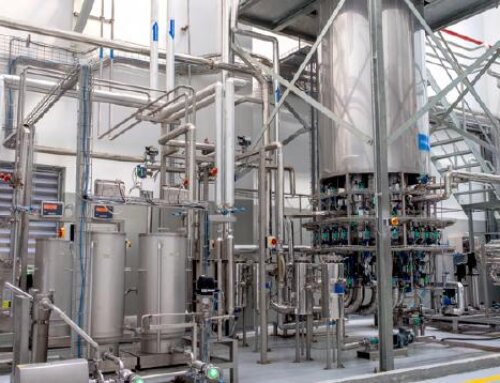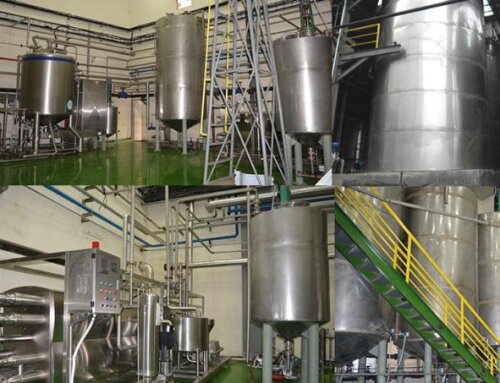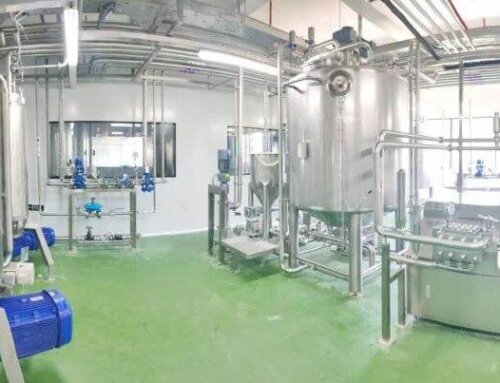RTD Coffee Drinks Production Line Description
Coffee originated in Ethiopia, Africa, also known as coffee beans or coffee berries. Coffee beans are processed into coffee beverages after peeling, removing the pulp, roasting, grinding and extracting. Coffee beverages, cocoa and tea are recognized as the world’s three most famous beverages.
Coffee beverages not only have a long history but are also loved by many consumers because of their caffeine, tannin, fat, protein, sugar, etc., which constitute the uniquely strong and mellow flavor of coffee beverages. The biggest flavor feature in coffee beverages comes from caffeine. Caffeine has a wide range of effects on the human body. Appropriate caffeine not only has an excitatory effect on the central nervous system, but also promotes blood circulation, improves metabolic functions, promotes digestive secretion, and diuresis, etc.
RTD (Ready-to-Drink) coffee drinks production machines include coffee bean roasting machines, coffee bean grinding machines, coffee extracting tanks, coffee extract disc separating machines, coffee extract evaporating and drying machines (for producing instant coffee powder), coffee beverage formulation, sterilizing, homogenizing and filling machines.
The coffee drinks production process involves coffee bean selection, roasting, grinding, brewing and extracting, coffee drink filtration, flavor adding and blending, coffee concentrating and spray drying, coffee drinks sterilizing and filling system.
RTD coffee processing is divided into hot brew and cold brew coffee drinks. Hot brew coffee uses hot water(90-96℃ hot water with 30 minutes extraction) to extract the flavor from the ground roasted coffee beans; cold brew coffee processing uses ambient or cold water to extract with a longer steeping process(12-24 hours) to achieve a smoother, less acidic flavor profile.
For coffee extraction, evaporating adopts to low-temperature treatment to keep the flavor and the sweet smell of the coffee.
The capacity of the coffee drinks processing plant is from 500LPH-10000LPH and the end products can be filled into bottles, cans or sachets.
RTD Coffee Drinks Production Line End Products
Concentrated coffee beverage: A liquid beverage made from coffee extract or instant coffee powder through processes such as blending and homogenization. The caffeine content is not less than 400 mg/L, and the coffee bean content is above 5%.
RDT(Ready-to-Drink) Coffee: Fresh coffee beans after roasting, grinding, extracting, separating, and blending to make the RTD coffee, then the RTD coffee will be homogenized, and sterilized to achieve a stable shelf life, finally, the end products will be filled into bottles, cans or cartons.
Coffee Latte: The coffee latte is composed of cow milk/plant-based milk, coffee, syrup, cocoa powder and other flavor ingredients. After the coffee beans are cold brewed, then are mixed with these ingredients, sterilized and filled into consumable containers.
Decaffeinated beverage: refers to a liquid beverage made from decaffeinated coffee extract or decaffeinated instant coffee powder. The caffeine content is not more than 50mg/L.
Instant coffee beverage: refers to the solid coffee beverage obtained by peeling, roasting, crushing, sieving, leaching and filtering coffee beans, and concentrating and drying process.
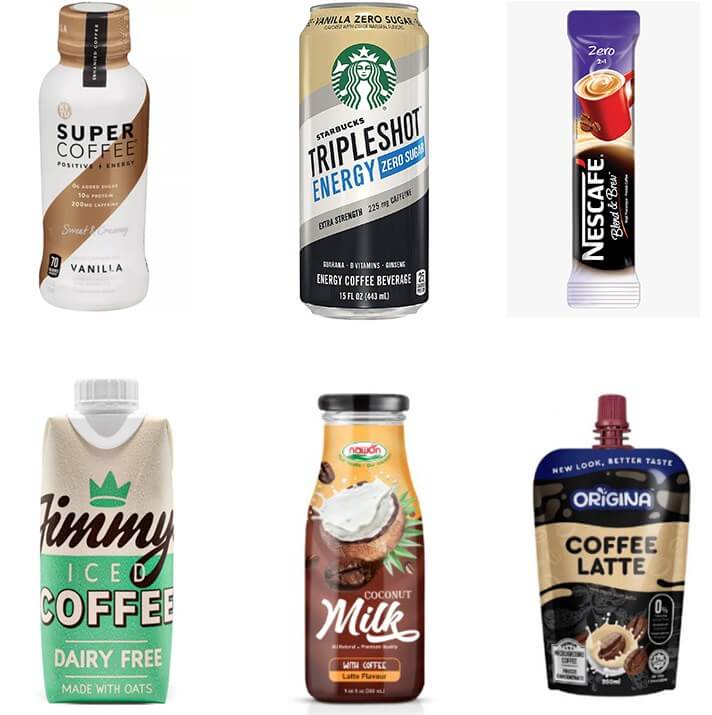
RTD Coffee Drinks Production Technological Flowchart
RDT coffee: In the industrial production of ready-to-drink (RTD) coffee, the process involves roasting the coffee beans, grinding the coffee beans, brewing high-quality coffee concentrate through hot brewing or cold brewing, followed by filtration, and possibly the addition of flavorings and sweeteners to form the final RDT coffee, then the coffee will be sterilized, homogenized and degassed, with the final step of filling the processed coffee drinks into packaging containers, ensuring a shelf-stable and convenient RTD coffee product for consumers.
Instant coffee: instant coffee involves roasting and grinding high-quality coffee beans, brewing the coffee, concentrating the extract, drying through methods like freeze-drying or spray-drying, cooling, optional blending for consistency, and packaging the resulting granules in airtight containers for convenient and rapid dissolution in hot water by consumers.

RTD Coffee Beverage Production Process And Machine Introduction
Coffee bean selection
Choose mature and plump coffee cherries, after peeling and removing the pulp, the coffee beans are obtained, and then the coffee beans are dried to a moisture content of 12%.
Roasting of coffee beans
Roasting can cause complex chemical changes in the sugar, protein, phenolic acids, alkaloids and other components in the coffee beans to form the unique aroma and taste of coffee. The roasting temperature is 200-220℃, and the time is 20-40min. The temperature of the roasted coffee beans will rise to 200℃, the water loss will be 16%-18%, and the color will become dark brown.

Coffee bean grinding and sieving machine
Cool the roasted coffee beans as soon as possible, then crush them with a grinder, filter them through a 100-200 mesh vibrating sieve, and make the coffee grain size 1-1.5mm. If the coffee powder is too fine, it is easy to cause excessive extraction during the extraction process, and make coffee taste strong and lose its aroma; The coffee powder is too coarse, resulting in insufficient extraction, and the coffee is weak and tasteless.

Coffee extraction, cooling and filtration
The coffee is extracted from the coffee bean by extraction, and the hot water extraction tank needs to ensure good air tightness to prevent the volatilization of coffee aroma. Add coffee powder to 90-100℃ hot water, the material-to-liquid ratio is 1:14-16, and extract and stir in the extraction tank. The extraction time lasts for 20-30 minutes. After the extraction is completed, the plate cooler is used to cool the coffee extract to room temperature immediately, and then the filter residue is filtered out through a centrifuge.


Coffee beverage blending
Add the coffee concentrate or instant coffee powder into the blending tank according to the proportions of the ingredients. At the same time, add water, syrup, stabilizer and emulsifier and other auxiliary materials according to the recipe. Turn on and stir on the blending tanks for 30 minutes. After all the ingredients are fully mixed, the end products are formed and the volume is fixed, send to the coffee beverage to the next process.

Coffee beverage homogenization and sterilization
To ensure that the fat in the coffee beverage has a better emulsification effect, so that the final product has no suspension, the two-stage homogenization is used, and the homogenization pressure is 20-30MPa.
After the homogenization is completed, the material liquid is pumped into the sterilizer for sterilization and then filled into the containers. Based on different containers, the sterilizing process is also different:
- Coffee beverages filled into cans or bottles: before filling into containers, the coffee beverage will be pasteurized through a plate pasteurizer(95℃ for 15-30 S), then hot-filled into the bottles or cans. After filling, the containers will be fed into a retort sterilizer for the second sterilization (121℃ for 15-20minutes).
- Coffee beverage filled into cartons: as the coffee beverage pH value is about 5, it belongs to the neutral beverage, so we need to use a tubular UHT sterilizer to do the heat treatment(137℃ for 3-5S).
- For the cold brew coffee, we can also use the HPP system to do the pasteurization as a form of non-thermal treatment, and there will be no milk or dairy products in the coffee drinks. After HPP treatment, the coffee drinks need to be refrigerated for storage, and shelf life will be about 15-30 days, depending on formulation and packaging.
